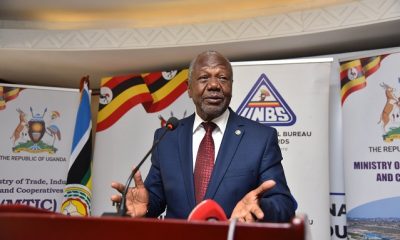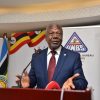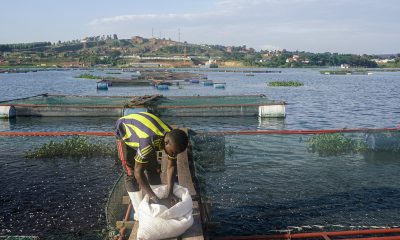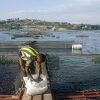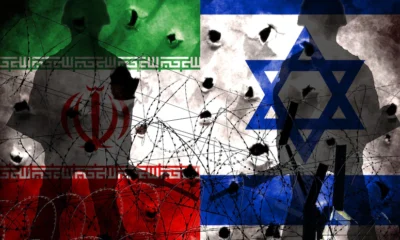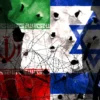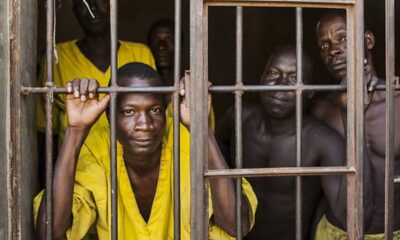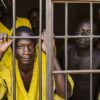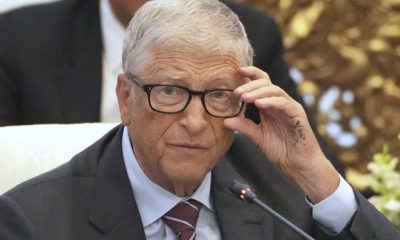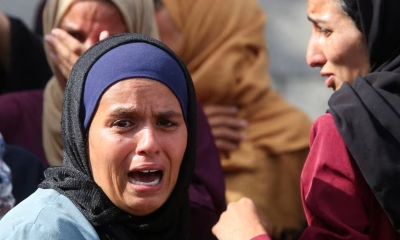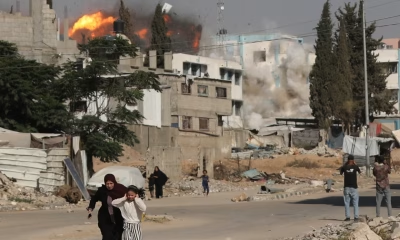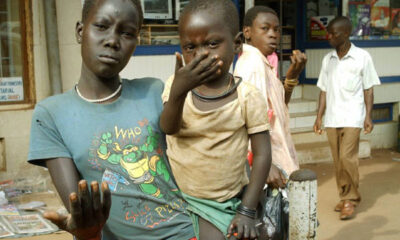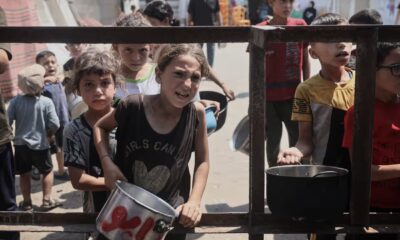Analysis
Origins of Apaa conflict
DP President Norbert Mao (In checked shirt) with Gulu district officials visiting one of the victims of the Apaa bloody conflict
A bloody dispute between the Acholi and Madi ethnic groups over the weekend gripped the nation and raised concerns of the threat of an eruption of a full blown conflict. But as The Sunrise found out, this conflict dates as far back as 1920s when the two communities used to fight over the same boundary.
The fighting which stemmed from a land dispute, has so far claimed 6 lives and left over 27 severely injured, is the deadliest between the two tribes which have lived alongside each other for generations.
It is not yet clear what exactly sparked off the fighting between the communities of Apaa village, Labala Parish in Amuru district on the Acholi side and their colleagues the Madi in Adjumani from the North.
Senior members of the community have given different accounts on the cause of the conflict.
In 1911, the British government drew administrative boundaries between Moyo (Adjumani) and Gulu district that was later split to create Amuru district in 2006.
People in the area say that the area around Apaa was by 1911 infested by TseTse flies and that the communities who lived in the area were forced to vacate it for health reasons.
In 1963, the Uganda Game Department amended statutory instrument Number 17 and gazetted Kilak Controlled Hunting ground for licensed gun holders.
On March 30, 1972, the then regime of President Idi Amin issued a Legal Order No. 54 of 1972 ordering the cancellation of gazzete of the Kilak Hunting Area.
This later led to the passing of a resolution in 1973 allowing residents of Apaa to return and occupy their ancestral land.
Today, residents of Apaa parish attribute the resurrection of the conflict on the re-gazetting of the area by the Uganda Wildlife Authority (UWA) in 2005 for the endless conflict between and the two tribes. The disputed area however has a population of around 10,000 residents.
Elders there say that following the re-gazetting of the park, the boundary between Adjumani and Amuru was extended 8kms into Apaa Parish from Juka Bridge.
Vinancio Ocan, 79, a resident of Apaa says the Bridge on Juka River got its name after elders sat at the river bank and mediated to stop conflict between the Acholi and Madi over boundaries in 1922.
Some on the Acholi side argue that the LRA insurgency forced them to flee the region into camps. As a result in 2002, following a motion from the Adjumani district, the place was gazetted as a wildlife conservation area to promote tourism in the North of Murchison Falls National Park.
Despite the end of the war, it is claimed that the former residents of Apaa were blocked from returning to the conservation area but in vain.
Lives and Property have since been lost as communities defy orders to vacate land for wild life. In July 2015, elderly women held a nude protest before government officials who had come to demarcate the boundary between Amuru and Adjumani claiming that they have violated the initial British boundary and extended into Amuru district.
Conflict between the two communities has since become a hindrance to development and productivity of residents in Apaa parish.
Starting on June 4, 2017, violence erupted once again as members of the Madi community attacked the Acholi in Apaa leaving four people dead.
The intensity of the atrocities forced Members of Parliament and leaders from Acholi Parliamentary Group to rash to Apaa parish to address residents and find a solution to the conflict and resettle communities that had left their homes for fear of being attacked.
Gilbert Olanya, the Kilak South MP evoked tears from the crowd whenever he mentioned names of those who died and in the mortuary and asked residents to prepare for revenge should the government not intervene and prosecute the perpetrators.
“We know that General Moses Ali of the UPDF is behind these attacks on our innocent civilians. Why do you attack civilians while the police that you deployed here are from Adjumani spying on our people to report to you?” Olanya asked.
Francis Adupa, the Ajumani DPC told the leaders that police had not yet arrested any suspect in connection to the attack.
“We are still following up on the matter to find suspects. We have not yet arrested any suspect however evidence has can cooperate with police to have the suspects arrested,” says Adupa.
His comments however caused more anger among the community forcing members of parliament to agree that they will not return back to parliament to deliberate until government pronounces itself on the matter. This week, Prime minister Dr. Ruhakana Rugunda visited the area to condole the bereaved and to promise government’s full commitment to find a lasting solution.
Anthony Akol, the Kilak North MP wondered why the police had failed to do their work to bring the perpetrator to book.
“How can you say that all 27 people are injured and four dead yet not a suspect has been arrested? I don’t think the police is a professional force then if you cannot investigate to find out what happened to our innocent civilians,” said Akol.
Lucy Achiro, the Pader Member of Parliament told the police officer to make sure the suspects are produce in court with in one week else the DPC answers before the Human rights committee of parliament how they handle the Apaa attack.
“If you don’t do your work officer and your team, we shall have to bring you before the human rights committee in which I sit so that you answer for these lives lost and our people still battling their lives in hospitals.”
Lyandre Komakech, the chairperson of Greater North Parliamentary Forum who also doubles as the Member of Parliament for Gulu district says the Apaa incident will be forwarded to Human rights watch for investigation as an independent body to have perpetrators prosecuted.
While singing slogans of “Apaa our Land” the Acholi community demanded the Acholi Parliamentary Group leaders take on Gen. Moses Ali to commit to stopping the Madi from crossing to power.
James Leku, the Adjumani LCV chairman however rubbishes claims by the Apaa community adding that the clashes were incited by Amuru leaders who mobilized their communities to attack the Madi living around Zoka where the disputed boundary lies.
“This conflict is a historic question that the leaders from both sides have to sit and resolve together. We in Adjumani don’t mind settling with any tribe.”
Acholi Parliamentary Group leaders are scheduled to meet the President on Friday 16th June 2017 to discuss issues pertaining the fate of the Apaa community on land ownership and boundary demarcation.
Comments




